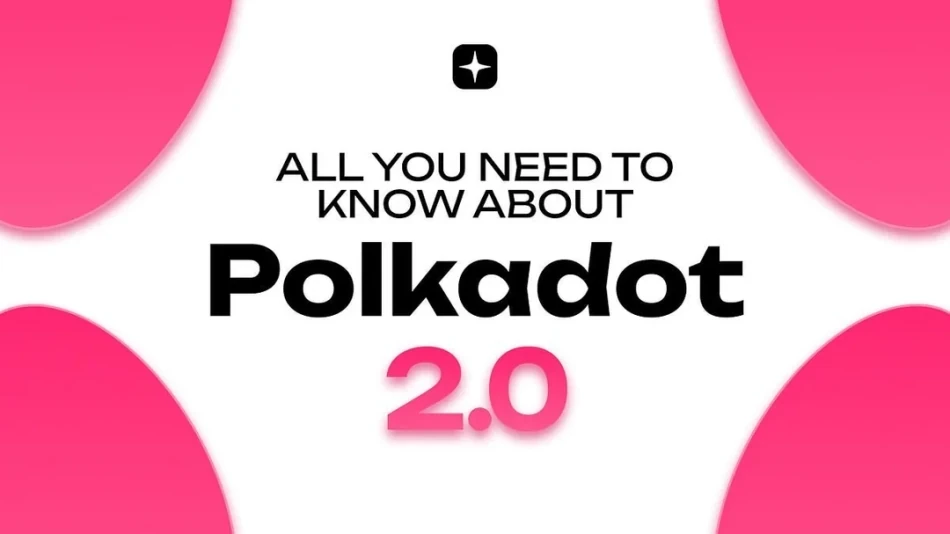
Polkadot 2.0: Revolutionizing Blockchain Architecture Through Dynamic Scaling
The blockchain industry stands at a pivotal moment as Polkadot unveils its most transformative upgrade yet. Far from a routine enhancement, Polkadot 2.0 reimagines the very foundations of distributed network architecture, tackling the persistent challenges that have limited blockchain's mainstream potential.
A Paradigm Shift in Blockchain Design
Traditional blockchain networks operate like rigid highways with fixed capacity, creating bottlenecks during peak usage and wasting resources during quiet periods. Polkadot 2.0 breaks this mold by introducing a dynamic, responsive infrastructure that adapts to real-world demands.
The upgrade centers on three groundbreaking innovations that work in harmony to create a more flexible and efficient network:
Dynamic Resource Management through Agile Coretime replaces the outdated auction system with a marketplace model where projects access blockchain resources on-demand, similar to cloud computing services.
Enhanced Performance Capabilities via Async Backing have already demonstrated tangible results since implementation in May 2023, cutting block times in half while expanding data capacity fourfold.
Adaptive Infrastructure through Elastic Scaling promises to deliver the holy grail of blockchain technology: automatic scaling that matches network capacity to actual usage patterns.
Technical Breakthroughs Driving Change
Async Backing: Proven Performance Gains
The numbers speak for themselves. Since deployment, Async Backing has transformed network performance metrics across the board. Block production now occurs every 6 seconds instead of 12, while storage capacity has expanded from 10MB to 40MB per block. Perhaps most importantly, the system now processes transactions in parallel rather than sequentially, eliminating a major bottleneck that has plagued blockchain networks since their inception.
This improvement translates directly to user experience. Applications built on Polkadot can now respond with near-instantaneous feedback, bridging the gap between blockchain capabilities and user expectations formed by traditional web applications.
Agile Coretime: Accessible Innovation
The transition from parachain auctions to Agile Coretime represents more than a technical upgrade - it's a philosophical shift toward inclusivity. Previously, only projects with substantial capital could secure network access through expensive auctions that locked up resources for years. The new model democratizes access by allowing projects to purchase exactly the computing power they need, when they need it.
This flexibility particularly benefits smaller developers and experimental projects that previously couldn't justify the massive upfront costs. By lowering barriers to entry, Polkadot 2.0 could unleash a wave of innovation from developers who were previously priced out of the ecosystem.
Elastic Scaling: The Future of Blockchain Infrastructure
Set for full deployment in Q2 2025, Elastic Scaling represents the most ambitious component of the upgrade. The system will monitor network usage in real-time, automatically allocating additional computational cores when demand spikes and scaling back during quieter periods. This mirrors the auto-scaling capabilities that have made cloud platforms indispensable for modern application development.
For blockchain technology to achieve widespread adoption, it must handle varying loads gracefully - from quiet periods with minimal activity to viral applications that suddenly attract millions of users. Elastic Scaling makes this possible for the first time in blockchain history.
Market Impact and Competitive Positioning
Polkadot 2.0 enters a landscape where Ethereum dominates through Layer 2 solutions and Cosmos attracts projects with its interchain architecture. However, Polkadot's integrated approach offers unique advantages over these fragmented solutions.
While Ethereum's Layer 2 networks achieve scalability at the cost of complexity and fragmentation, Polkadot maintains unified security across all connected chains. Users and developers benefit from consistent security guarantees without navigating multiple trust models or bridging protocols.
The upgrade also positions Polkadot to compete with traditional cloud platforms for enterprise applications. As businesses increasingly explore blockchain integration, they need infrastructure that matches their existing expectations for reliability, performance, and cost-effectiveness.
Sector-Wide Implications
The ripple effects of Polkadot 2.0 extend far beyond the immediate network improvements. For application developers, reduced costs and simplified deployment could trigger an explosion of creative projects that were previously economically unfeasible. The pay-as-you-go model particularly benefits experimental applications and startups that need to minimize upfront investment.
Enterprise adoption becomes more realistic when blockchain infrastructure can automatically scale to meet business demands without manual intervention or capacity planning. Supply chain applications, financial services, and data-intensive operations all benefit from this cloud-like flexibility.
From an investment perspective, these fundamental improvements strengthen Polkadot's competitive position in a crowded market. As the blockchain space matures beyond speculative trading toward utility-driven applications, networks with superior technical capabilities gain sustainable advantages.
Looking Forward
The complete Polkadot 2.0 vision will reach fruition with smart contract integration in Q3 2025. This final piece enables the network to support computationally intensive applications that require both high performance and automatic scaling - from real-time gaming environments to complex financial derivatives.
Success isn't guaranteed, but Polkadot 2.0 represents the most comprehensive attempt to solve blockchain's scalability challenges without sacrificing the decentralization that makes the technology valuable. If executed successfully, it could establish new standards for what distributed networks can achieve and accelerate blockchain adoption across industries that have remained skeptical.
The blockchain industry has long promised to revolutionize how we think about digital infrastructure. Polkadot 2.0 brings that vision closer to reality by creating a network that adapts to human needs rather than forcing humans to adapt to technological limitations.
Most Viewed News

 Layla Al Mansoori
Layla Al Mansoori






